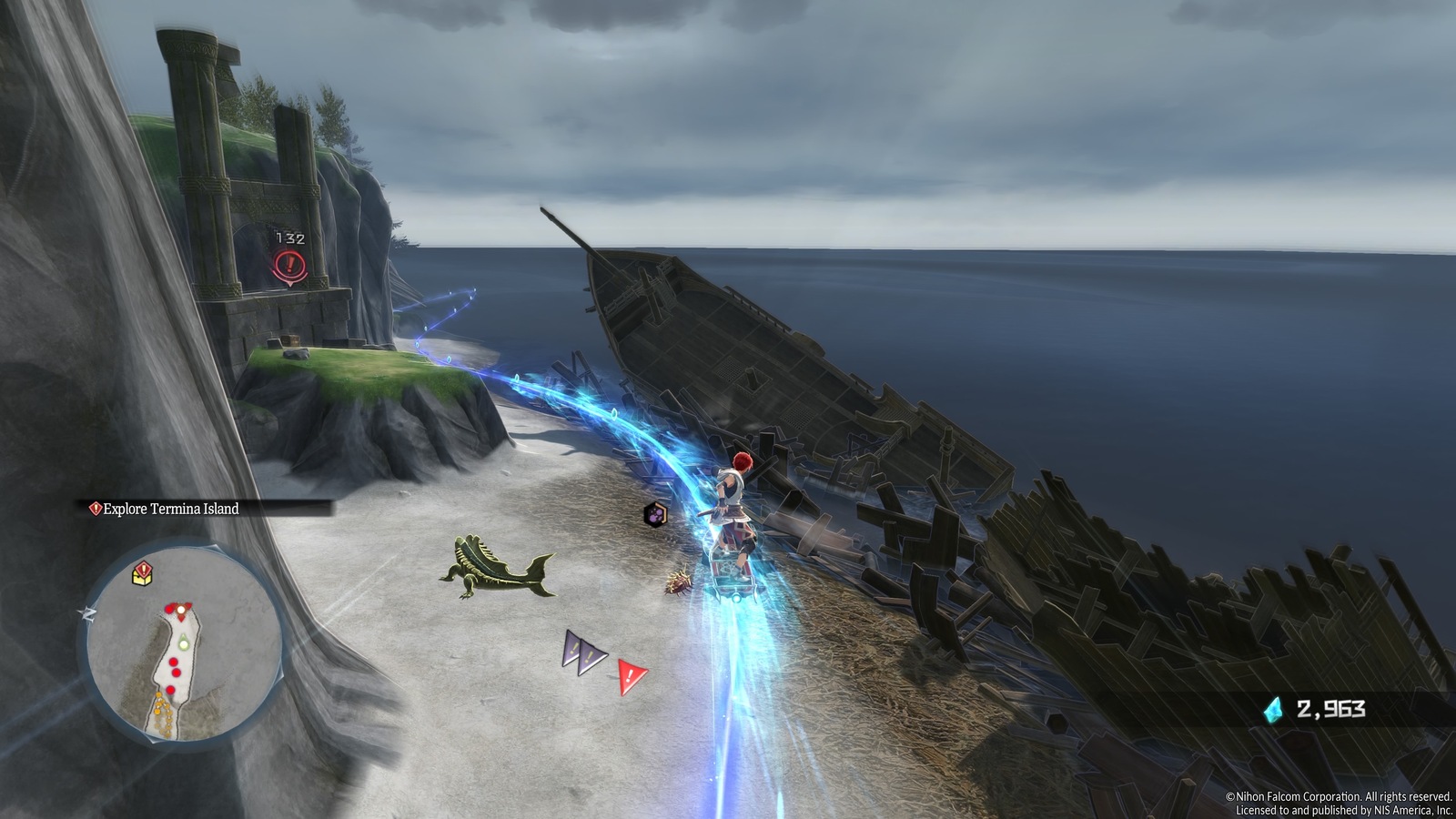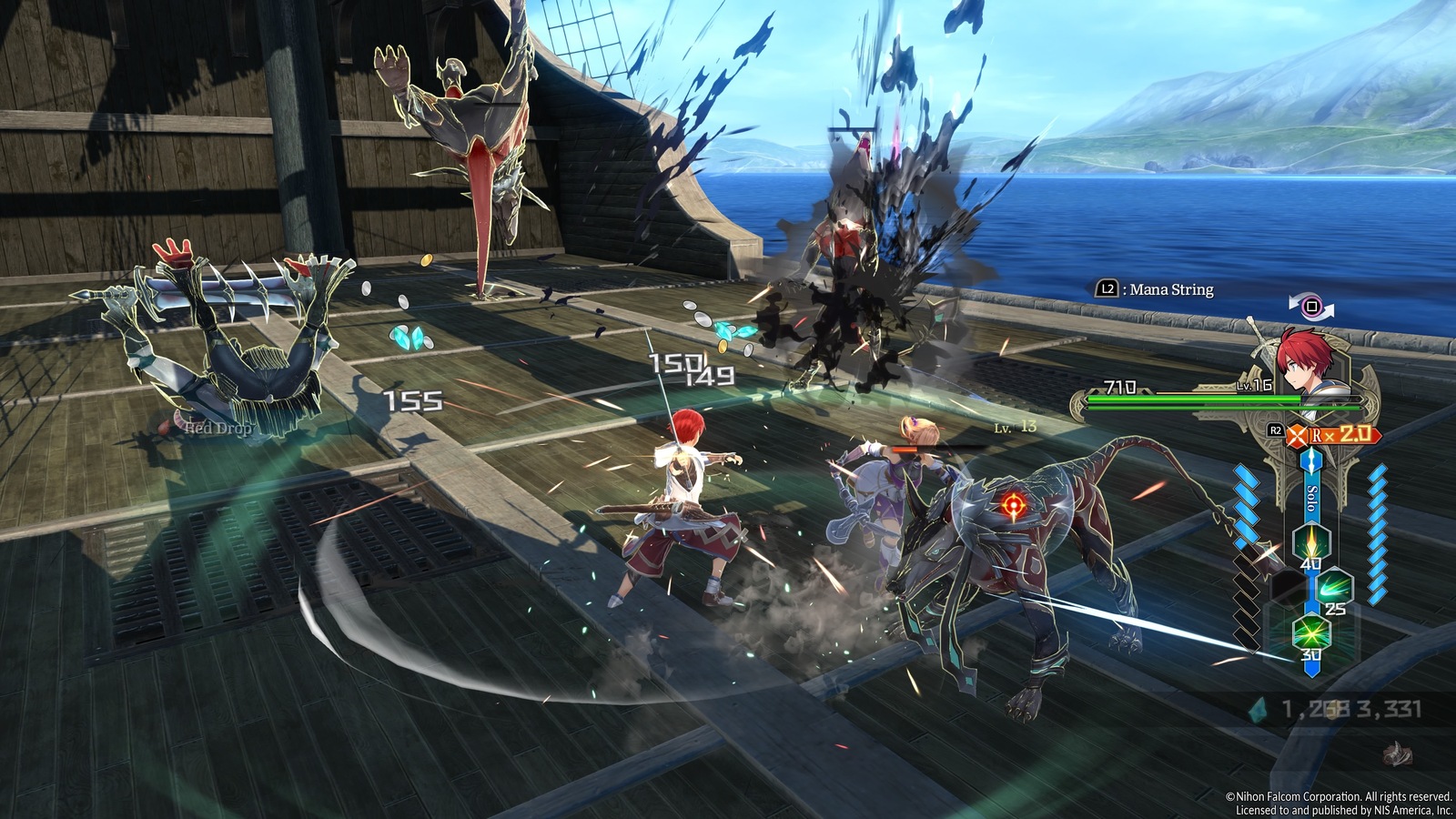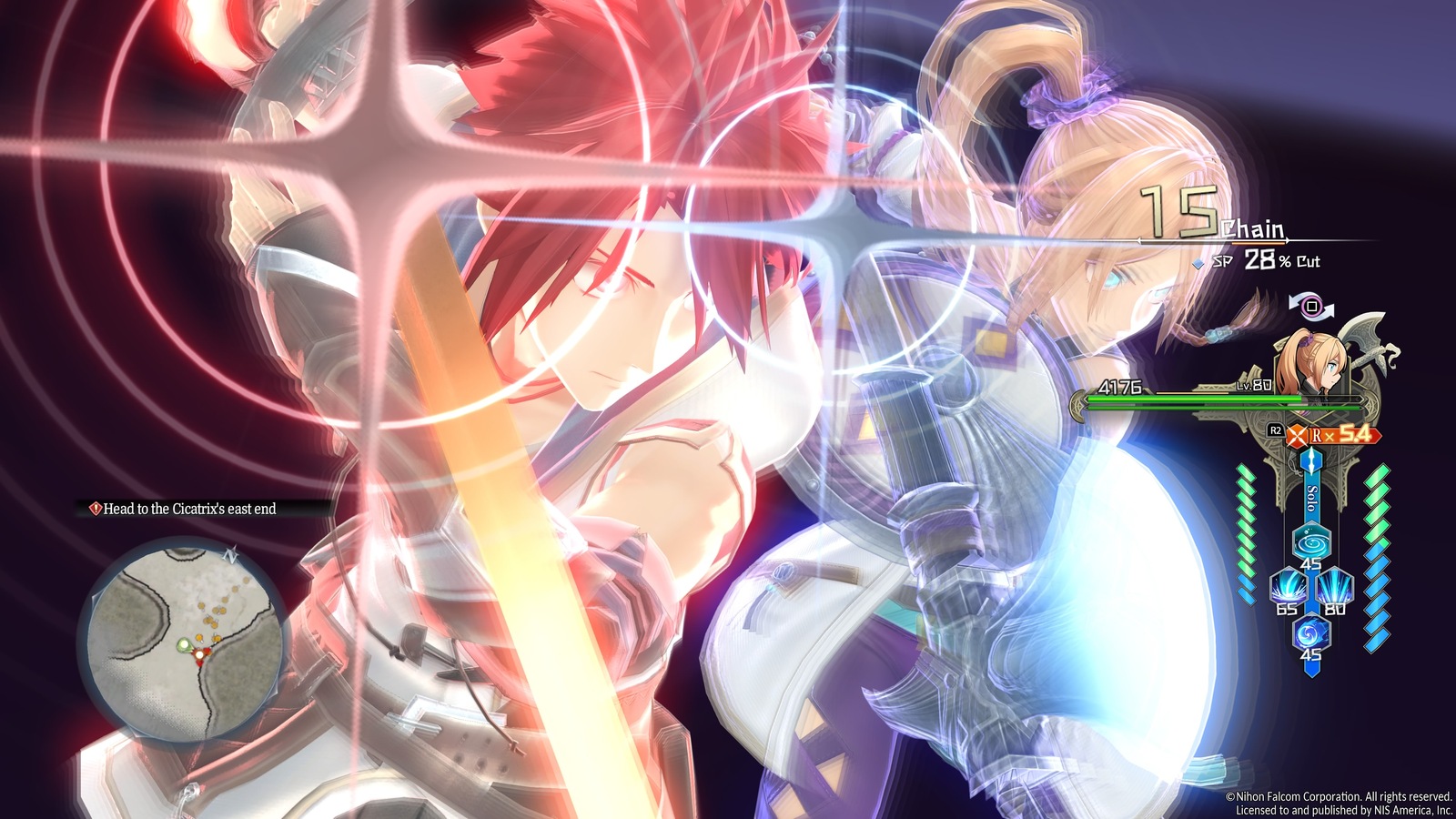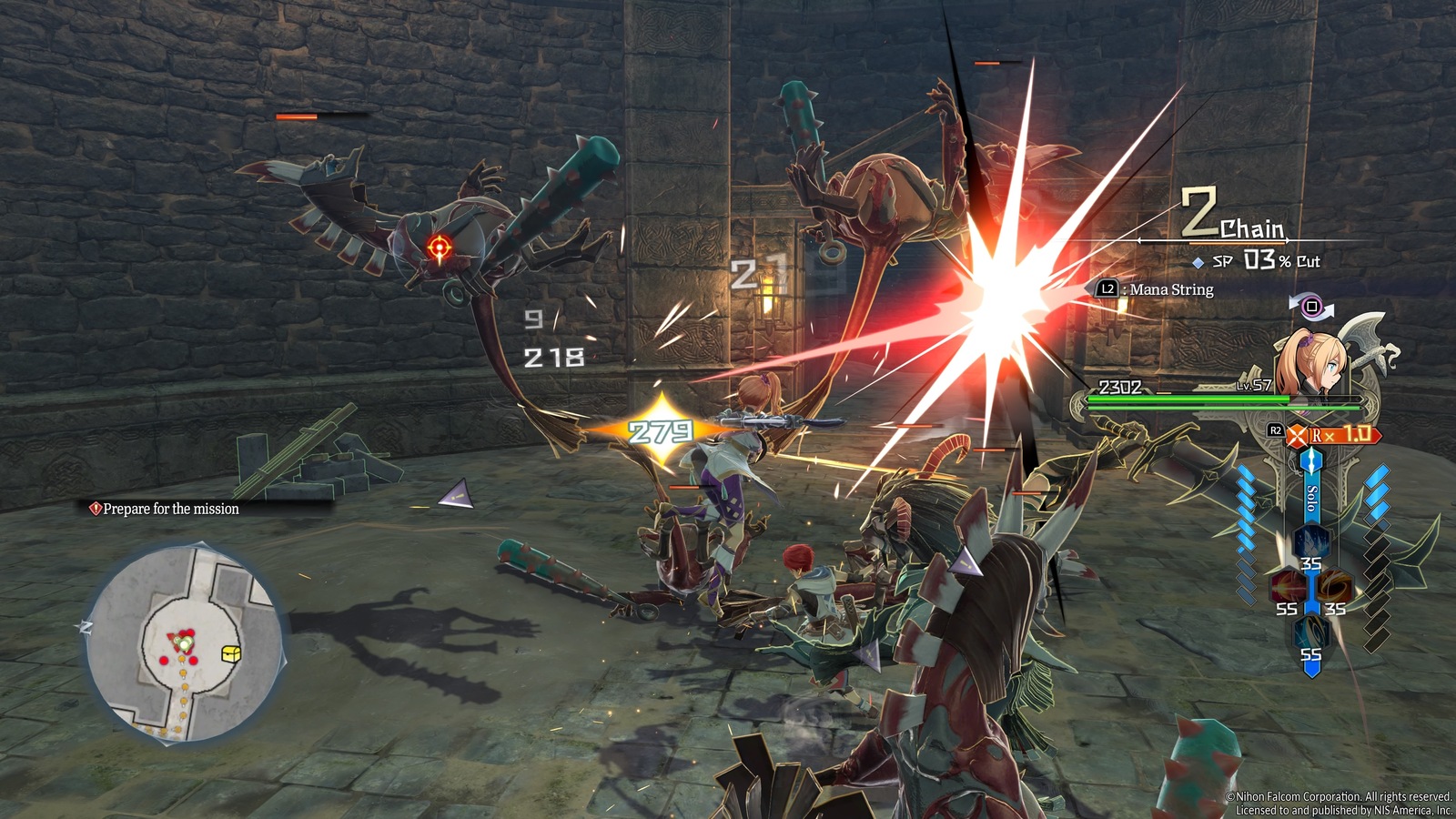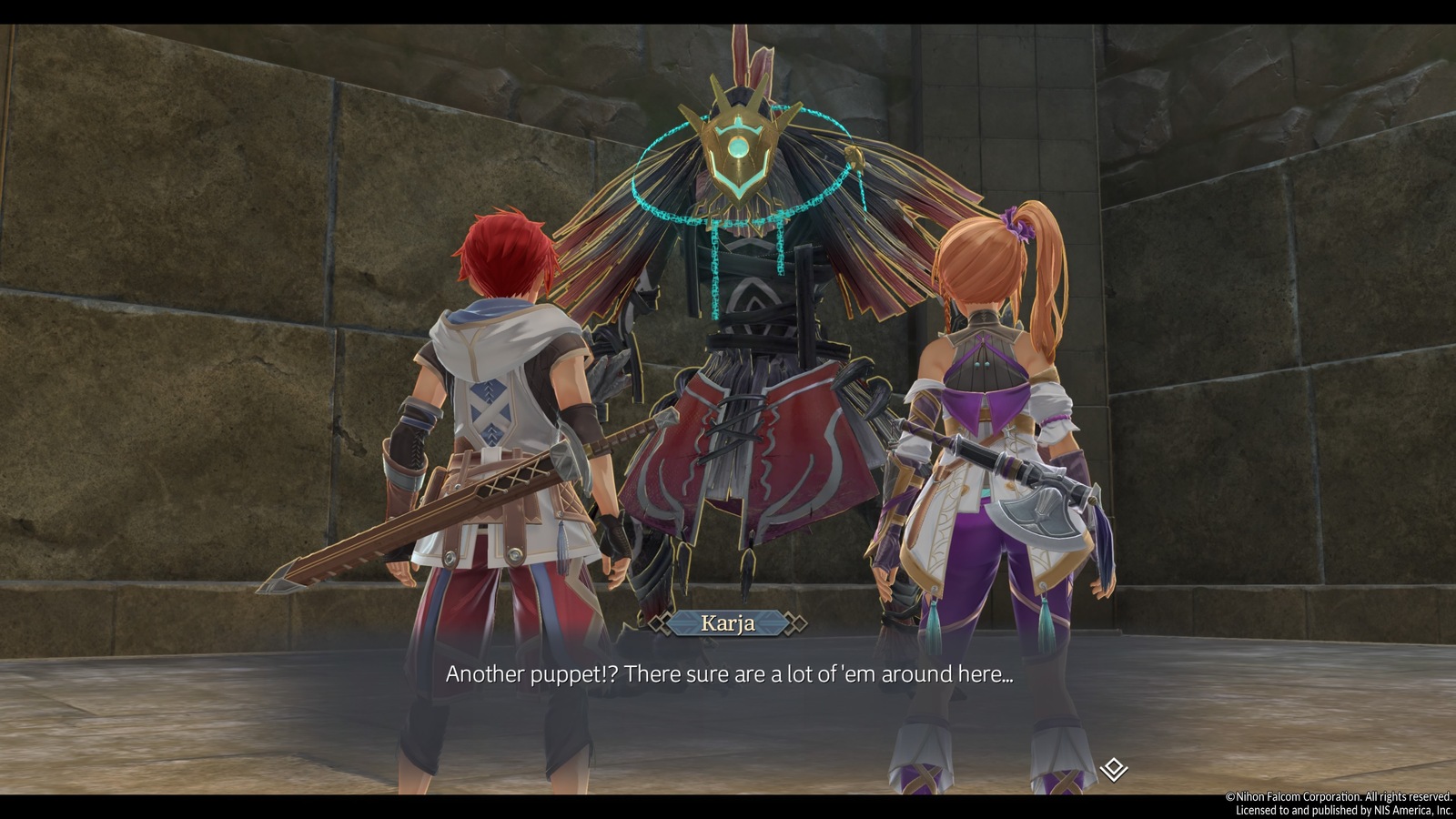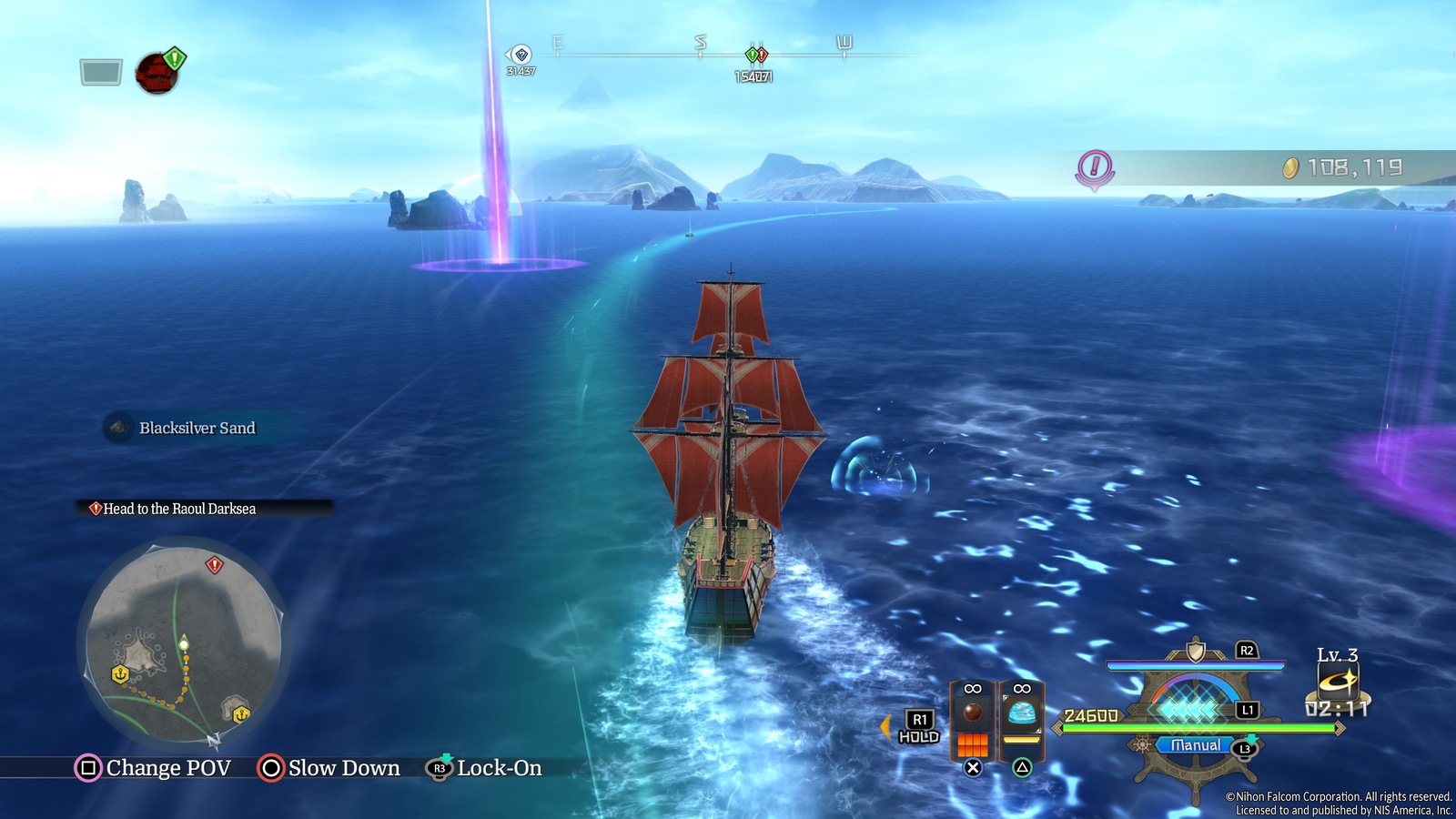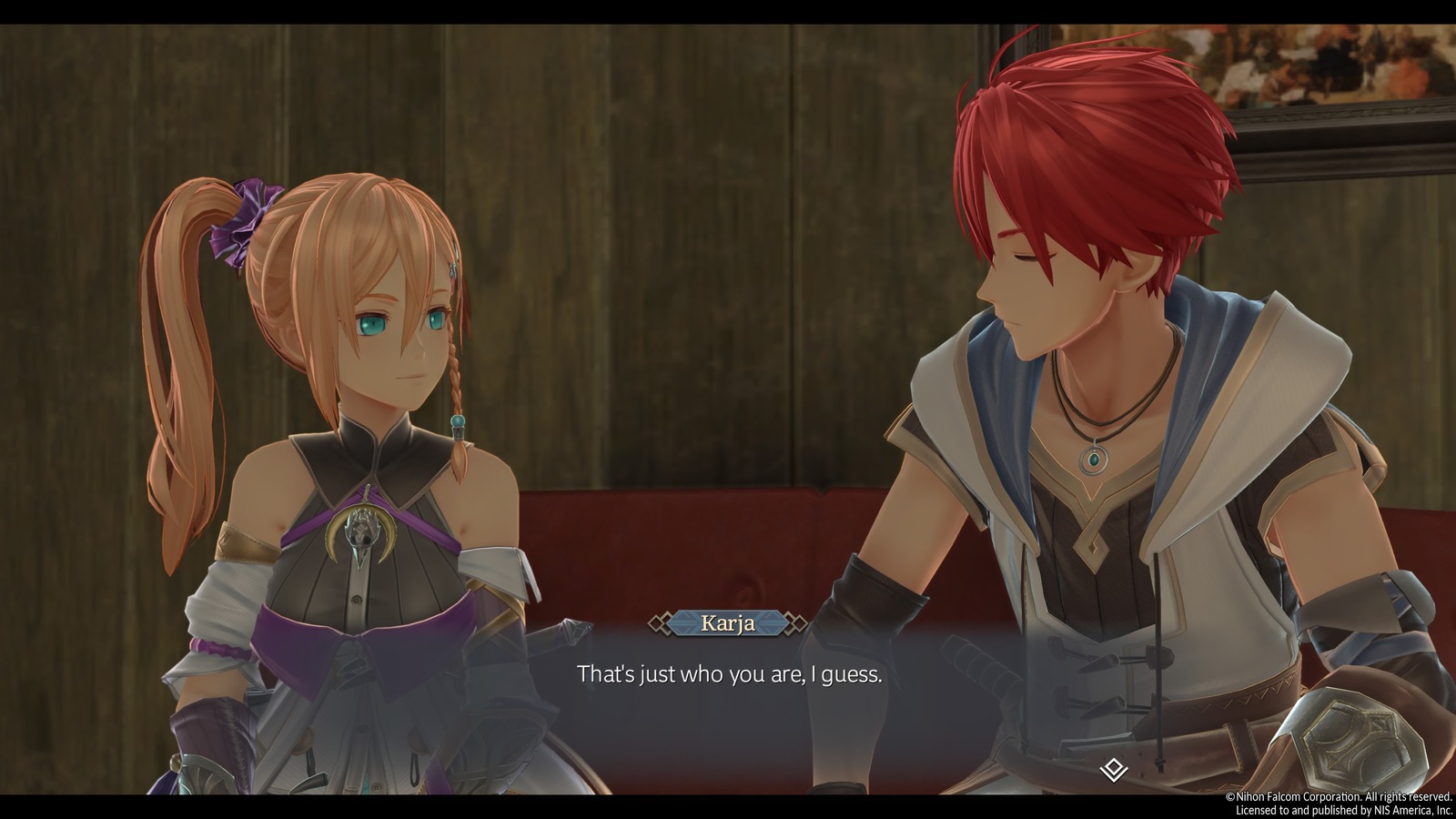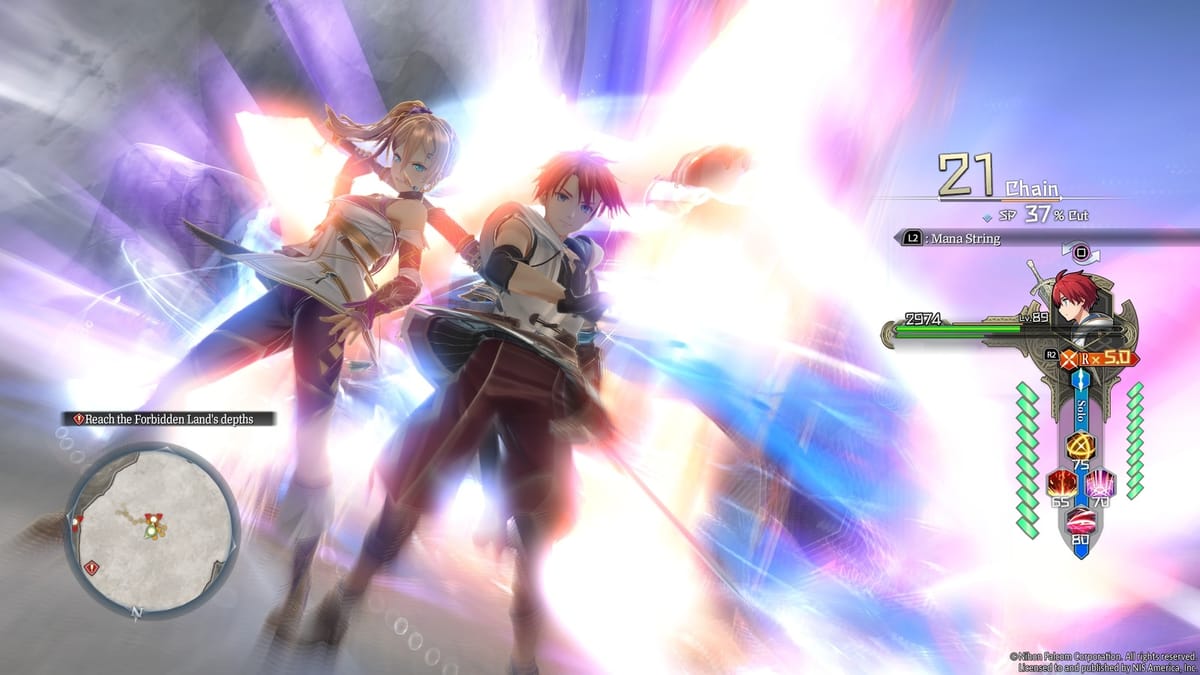
Ys games have a zest for life that little else can match. In the world of Ys, everyone and everything is an adventure waiting to happen. Each entry explores what it means to live a fulfilling life from some new angle or location, and Ys X is no exception. Ys X posits that to live is to change, and in turn, setting your own course in life. The game embodies this principle through several shakeups to Ys’s longrunning action RPG formula. Not every new direction reaches its full potential, but Ys X’s expedition into uncharted waters builds an admirable foundation for its future.
Change isn’t necessarily anything new for Ys. Prior entries fundamentally alter the gameplay frequently enough that that can break this series up into several distinct “eras.” Still, it’s been a long time since Ys has seen any dramatic changes – since I became a fan, actually. My journey to Ys started with Ys Seven in 2010, which established a “party” style of gameplay that the series has stuck with in the decade plus since its inception. Whereas older Ys games had protagonist Adol fight solo, these games gave him several allies that you could freely swap between. Perhaps predicting the road that all modern action games would eventually go down, this combat system emphasized proper parry timing above all else.
This little history lesson matters because Ys X introduces a “duo” system that often feels like a direct response to some of the party system’s weaknesses. The duo system trims Adol’s crew down to just two people: himself and newcomer, Karja. Where before you had several characters with their own arsenals of skills and weapon quirks to master, Ys X narrows the scope significantly.
The tighter focus complements the core of what Ys has historically been: a straightforward, no nonsense action series with tastefully light RPG elements. While I wouldn’t say the party system overcomplicated Ys, it leaned into complexity in a way that didn’t necessarily benefit the core combat system. It benefitted Ys’s narrative ambitions more than anything else. In contrast, the duo system strikes a more restrained balance between adding dynamism to the combat without bloating it too much.
At its heart, Ys X remains a relatively basic game where you run around fields hacking and slashing enemies. The strategy of the duo system primarily factors into confrontations with stronger enemies that have two health bars – one an “armor” bar that needs to be broken to reach the other, actual health bar. Generally, this translates to using Karja to break the enemy’s defenses and then swapping to Adol to finish them off.
Teamwork drives the combat system in a variety of ways. Ys X also features a skill chain system, where whenever you use a skill (a special attack tied to rechargeable MP) back to back with a different skill, you get a MP discount for your next skill. If you stick to one character you’ll quickly run out of MP and end up breaking the chain. If you efficiently swap between Adol and Karja, though, you can keep the chain going to the benefit of both characters.
Proper skill chaining allows you to quickly and efficiently dispose of enemies, especially when taking advantage of their duo skills. This set of skills draws from both of their MP pools for massive damage. While early on these duo skills threaten to dominate the gameplay, Ys X cleverly ties their true power into your defensive mechanics.
Ys X most obviously reevaluates the party system with its changes to the defense options. Party Ys games give you a dodge and a guard to avoid enemy attacks. Timing either of these moves properly activates a “flash” mechanic that grants extra bonuses like slowing time down or making you invincible. I don’t dislike this system, it’s obviously been fun enough to carry several games up to this point, but it has always felt oddly exploitable.
Mastering party Ys combat boils down to spamming flash guards for indefinite invincibility. This ability creates a strange metagame where you’d often go out of your way to fish for enemy attacks or run up to stray projectiles specifically to keep your invincibility going. Because of this, parrying takes priority over everything else in the combat system; there’s no real reason to use the dodge and proper parry timing will carry you through far more easily than proper skill management or party composition.
In order to address this lopsided combat balance, Ys X changes the rules. Dodges and guards return, they just no longer produce the same exploitable flash effects. Perfectly timed dodges only activate a slowdown effect for specifically marked blue attacks, while perfect guards simply deflect an attack and provide an opportunity for a counter rather than an invincibility window. No invincibility for parries means that you need to be far more careful about what attacks you throw out and when, as you can’t immediately cancel attacks into a guard. The removal of flash guards changes the feel of combat a lot.
Still, it may not change enough. Although each defensive option has a more specific use case, the parry still tends to dominate most encounters. Dodging ends up being far too situational between the color coded attacks and some questionable hit ranges of attacks that make avoidance riskier than it should be. Parrying simply provides more compelling benefits, considering its more reliable negation of damage, the counter hit providing a nice damage return on investment, and a boost to a new mechanic called the “Revenge gauge.”
I like the Revenge gauge in concept, but I’m torn on its execution. Whenever you guard or parry an attack, a multiplier increases that boosts the damage of your skills as “revenge.” That damage increase includes the damage of duo skills, although using these more powerful attacks cashes out your multiplier and resets it to zero. Therefore, you want to buff your revenge and unleash your strongest attacks as quickly as possible – or at least I think that’s the intent.
It makes sense to cash out early initially with a smaller multiplier, but as you level up the multiplier and you begin working with something like a 5x boost, the decision becomes less clearcut. Needing to temporarily nerf your regular skill damage feels bad because building the revenge back up can take several successful parries, which takes time that could have been better spent spamming out 5x skills with a high skill chain. What starts as an interesting risk/reward mechanic eventually turns into a boost you feel compelled to hoard until you beat a boss down to low enough health where a full power duo attack will finish them off.
On a more practical level, the new defensive mechanics don’t play nicely with battles against several enemies at once. I often ran into situations where enemies would simultaneously throw out conflicting attacks, like say one that specifically required a dodge and one that required a parry at the same time. If you go for either, you’ll typically eat at least one of the attacks no matter what you pick. These messier scenarios worked better when you had an invincible parry to bail you out of potentially unfair situations. Now these fights become awkward dances where you run around waiting for the enemy to give you an opportunity to fight back.
The controls can also create some awkwardness. Between all the different triggers and double functions of various buttons, the control scheme discombobulated me on more than one occasion. For example, the trigger button you hold for duo skills doubles as the guard button, which ended up throwing me off because the trigger for normal skills sits on the same side of the controller. These functions feel so similar to perform that I’d occasionally mix up which one also had the guard mapped to it. Similarly, because you press the face buttons for basic combat actions and for the various skills when holding the triggers, accidentally letting go of a trigger can lead to unwanted character swapping.
Look, I admit that now that I’ve entered my 30s it’s possible my brain is melting, I just don’t think that’s the case here. I play these games on Nightmare difficulty without using healing items, so fights get intense and the most minor of input errors matter. These issues stood out to me because I don’t think I’ve ever struggled with the basic controls in an Ys game before. I eventually adapted, the control scheme just struck me as more busy than perhaps it needed to be.
Overall, I do like Ys X’s combat and it brings some compelling ideas into the fray, they just could use some further refinement. Perhaps some kind of timer that gradually depletes the Revenge gauge multiplier could encourage players to cash out more regularly. Alternatively, you could remove normal skills from the equation altogether which would solve the hoarding problem and convoluted controls in one go, with weaker single character variations of skills taking the place of duo skills when your partner is unavailable. Speaking of, it’d be nice if the revive option for a KO’d partner weren’t so sticky and occasionally unresponsive to the point it seems bugged. Plenty of room for improvement in this game!
If anything truly lets the combat down, it’s the lack of enemy variety. Ys X pretty much stops introducing new enemy types outside of bosses about halfway through the game. These enemies work fine initially, but their later reuses start to get tedious. Most of an enemy’s challenge consists of figuring out their parry timing which you’ll have down after the first time around. Ys X has a recurring “Puppet Griegr” mini boss that drives this home – not even the amazing song that plays during these battles makes me want to ever see these things again. By the end of the game, the basic fun of its mechanics kept me going more than any active effort on the game’s part to introduce new ideas.
Of course, combat also only makes up part of the adventure. There’s a whole world to explore between bouts. Ys X takes place in a northern body of water heavily inspired by Nordic countries and Viking culture, hence the Nordics subtitle. This setting provides Adol a vast body of water and islands to explore by boat. It’s a compelling premise, and not just because it gives Adol an opportunity to make amends with his longstanding relationship with sea vessels, which in other games inevitably seem to shipwreck whenever he sets foot on them. This time around, if the ship goes down it’s your fault!
That said, the ship still doesn’t make a good first impression. It’s too slow and too anti-Ys. Quick, snappy action defines this series, so I’m not sure what they were thinking with the lethargic pace the ship initially moves at. The boat gradually improves as you unlock upgrades, I just think it would have benefitted from having its base stats start at around where they’re at by the game’s halfway point.
The charm of the boat lies more in what it represents than its overall execution. Let’s be real here – Ys games do not operate on massive budgets and this ocean is neither a looker nor as vast as it first appears. What it is, however, is a window into the unknown that the player’s imagination can freely run with to create the sense of adventure this series excels at. Each chapter of the game opens up new sections full of islands and other points of interest. Along the way, some light ship combat keeps the trips to and fro interesting. Boat traversal doesn’t amount to anything fancy, but it gets the job done and fits well as a fresh way to interact with Ys’s world.
Similarly, the individual islands prove fun to explore without going overboard with flash. Ys’s mixture of combat and fast-paced exploration still works wonders, and new additions like a surfboard made of mana provide some slick movement options that add to the thrill of traversal. However, the content of the islands themselves tends to be straightforward both in setting and what you encounter. Ys level design rarely aims to be too complex, but X especially prefers to keep things simple with mostly straight lines containing a few nooks hiding treasure and even fewer puzzles impeding your progress. A breezy approach, particularly for the optional content, complements the more involved main path.
Despite its speedy nature and fierce action, Ys X ends up being an exceedingly cozy cruise. It owes that feeling at least partially to its gradually expanding ship crew. It may seem strange that these later Ys titles place more emphasis on the characters and dialogue, but it makes sense to me. People add flavor and context to the world around you. In a globetrotting series like Ys, I think it’s wise to invest in them. The writing in these games tends to be fun and the characters detailed, and Ys X is no exception in that department.
Karja obviously stands out as the highlight as the main heroine, and I enjoyed the emphasis on her dynamic with Adol. Adol is a cool guy so you more or less expect every heroine in these games to fall for him. His relationship with Karja angles closer towards a sibling-esque one, which is a fresh change of pace.
Ys X doesn’t navigate all of the new territory it explores gracefully, but I enjoyed the adventure as a whole. Ys’s combination of action, exploration, rock music, and detailed writing carries the vessel steadily through all of its rough waters. Playing through Ys X reminded me of my first time playing Ys Seven – it’s a great introduction that I expect its direct sequels will surpass. Adol’s adventures will continue and Ys will keep on changing, so I’m excited to see how Ys X’s foundation expands from here.
Ys X: Nordics
Great
Ys X boldly sails into uncharted waters. It’s a sturdy vessel of combat, exploration, and heart, even if some of its individual parts could use further refinement. Ys X may not be my favorite Ys, but it does an excellent job of reminding me why Ys is my favorite.
Pros
- Thoughtful reinvention of gameplay
- Strong mix of combat and exploration
- Engaging characters
- Great soundtrack
Cons
- Needs further refinement
- Lack of enemy variety
- Budget doesn’t gracefully match its ambitions

